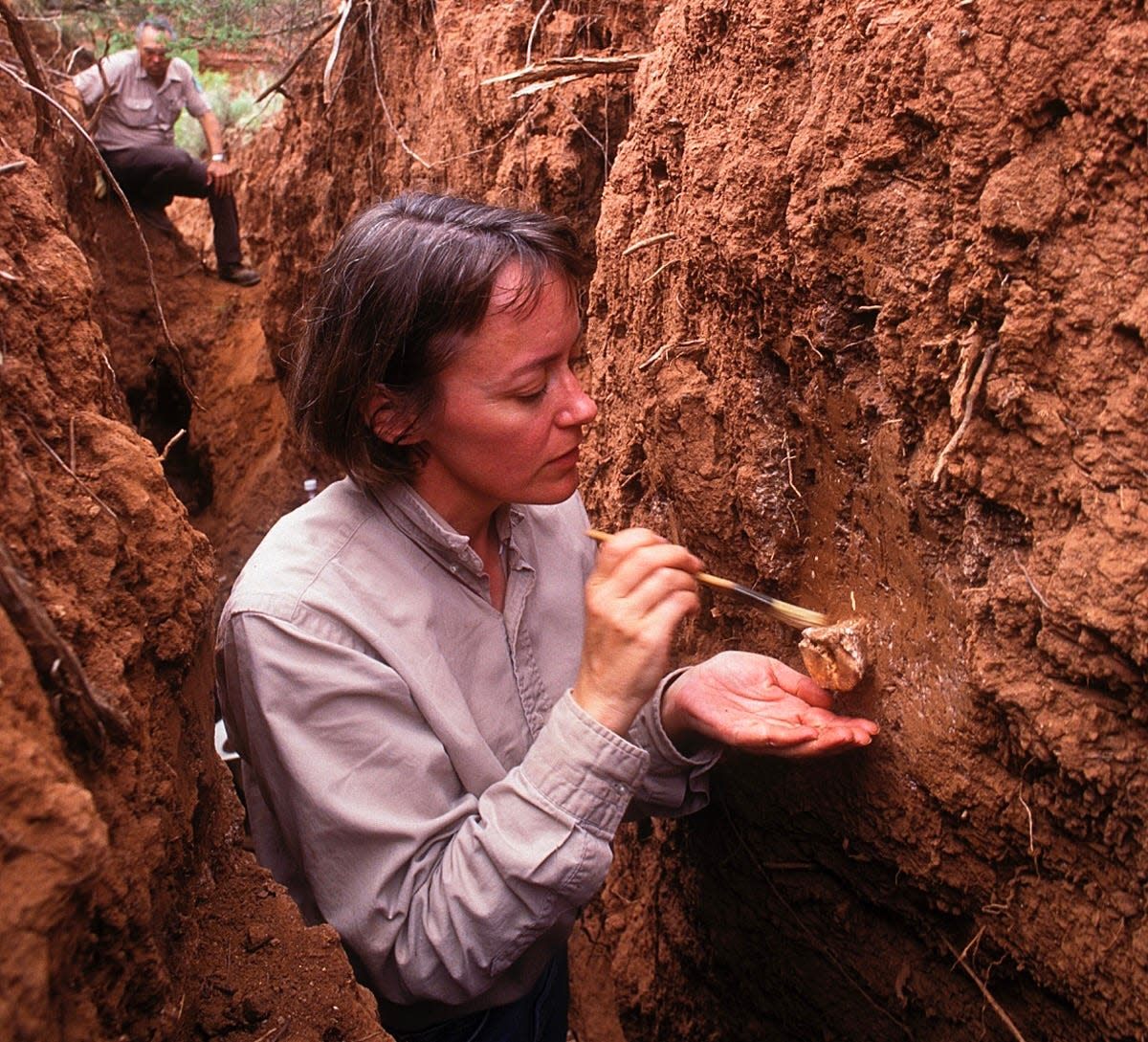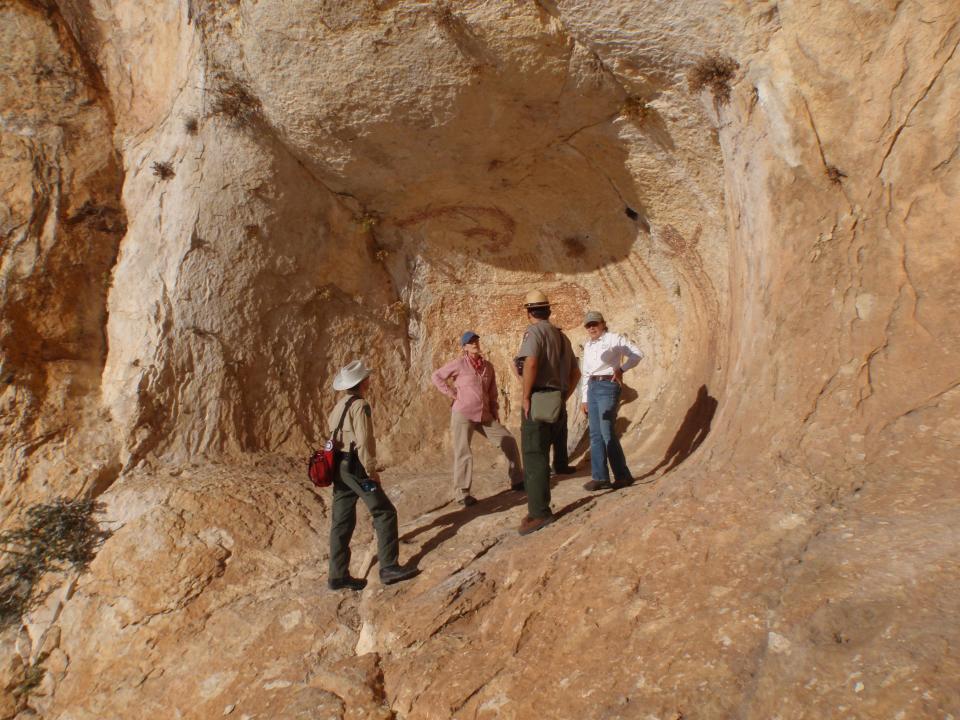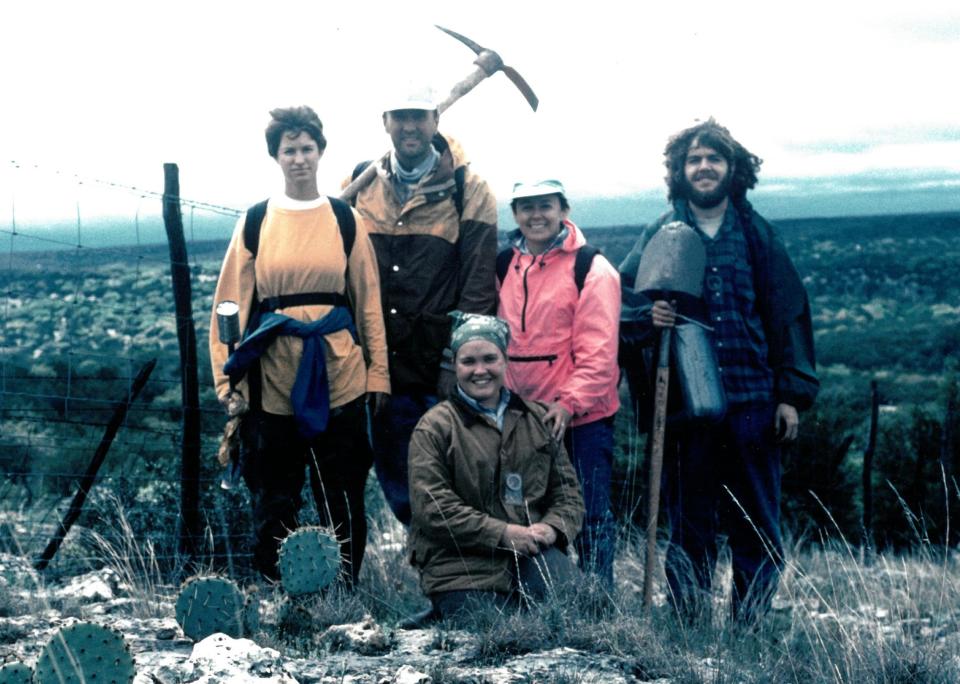‘No stone unturned’: Margaret Howard helped reshape the archaeology of Texas State Parks

The 89 Texas State Parks encompass more than 640,000 acres of land, and are visited by some 10 million people a year.
They range in size from the Old Tunnel State Park in Kendall County, covering 16.1 acres, to Big Bend Ranch State Park in Presidio and Brewster counties, at more than 300,000 acres.
Humans have lived in Texas for some 20,000 years, according to evidence found at the Gault Site, on the border of Williamson and Bell counties. It's safe to say they left plenty of evidence of their time on Earth. And it logically follows that during those 20 millennia, some of their artifacts came to rest in what would become Texas state parkland.
How, if you work for the Texas Parks & Wildlife Department, do you efficiently and effectively protect and preserve those artifacts and archaeological sites during park planning?
Margaret Howard, an archaeologist who was honored with a lifetime achievement award last week by the Texas Historical Commission, figured out, along with colleagues such as Cindy Brandimarte and Aina Dodge, how to ensure that parkland is surveyed for relics before new park structures are designed and built.
More: Texas history: We turn the clock back 20,000 years at the Gault Site in Central Texas
This strategy results in fewer prehistorical surprises once the locations for structures are selected, and it saves money. Designers and builders can judiciously avoid disturbing sensitive zones identified during initial surveys.
During her 23 years with Texas Parks & Wildlife, Howard supervised surveys of more than 29,000 acres of parkland — an area the size of Manhattan! — along with 674 sites of proven interest.
"Texas consists primarily of private land, where protection of archaeological sites is not guaranteed," Howard says. "The state park system serves as a 'bank' of cultural resources that can be preserved into the future, when scientific advances will reveal considerably more information than can be obtained today."
Texas parks on the rise
Howard and her collaborators' timing was fortuitous. The system's biggest park, Big Bend Ranch, for instance, was purchased in 1988. Limited use was allowed by 1991, but the gates were not thrown open to the public until 2007.
Plenty of time to survey the land.
Or part of it. Because of the new park's vast size, Howard's team stuck to areas around trails and roads, which would have been used by Native Americans, settlers and ranchers.
More: Want to see 2 million years of life? Visit the Lubbock Lake Landmark dig
Caprock Canyons State Park, with its reintroduced herd of bison in Briscoe County, extends over more than 15,300 acres. The state purchased the land in the mid-1970s, but the park did not open to the public until 1982, giving archaeologists time to make a preliminary survey.
Howard was part of similar surveys at iconic parks such as Devil's Sinkhole State Natural Area in Edwards County, Devils River State Natural Area in Val Verde County, and Hueco Tanks State Park and Historic Site in El Paso County. The latter two contain excellent samples of ancient rock paintings.
Howard retired in 2017, leaving the field open for other parks archaeologists. Timing was on their side, too, since two political movements soon afterward aided both the operation of the historically underfunded Texas parks system and the acquisition of new parkland for the state's growing population.
In the years since Howard's retirement, George Bristol, onetime National Parks Foundation Board member, helped push through the 2019 state constitutional amendment that permanently set aside the sales tax on sporting goods to fund the maintenance and operation of state parks and historic sites. Previously, legislators had often grabbed that money to fund other projects or help balance the state budget.
He and his allies did not stop there. In 2023, Texas voters approved Proposition 14, which set aside more than $1 billion for the Centennial Parks Conservation Fund. Interest earned from that invested money can be used to purchase new parkland, a windfall unheard of in the system's history.

Prioritizing the cultural resources of Texas parks
Last week, Howard received the Curtis D. Tunnell Lifetime Achievement in Archeology Award at the Real Places 2024 conference in Austin and online. It was presented by the Friends of the Texas Historical Commission, the state agency's nonprofit partner. The award is named after legendary preservationist, oral historian, archaeologist and folklorist Curtis Tunnell, who passed away in Austin at the age of 67 in 2001.
Howard got her true start in archaeology in undergraduate school in Minneapolis and then in 1980 while in graduate school at the University of Texas. She worked in the field for 37 years, 23 of them as head of the Texas Parks & Wildlife survey team. She published more than 30 archaeological reports on the prehistory of the state.
More: Unprecedented history unearthed at freed slave’s Travis County farm
"During her entire career, Margaret was committed to exhausting all possibilities for research and — literally — left no stone unturned in her efforts to tell the stories of human occupation in Texas," reads Howard's award nomination. "Every archaeologist has a passion for understanding the past. Margaret took that passion and combined it with her extraordinary attention to detail and her unfaltering commitment to 'get it right.'"
While in grad school, Howard worked as a lab assistant at Prewitt & Associates, which collects data on antiquity. She worked her way up to principal investigator and led data-recovery excavations on projects across the state, most notably at the Wind Canyon Site in the Eagle Mountains of Hudspeth County.
"Some of my early Texas work was in the Houston area," Howard says. "The mugginess and the mosquitoes get to you. I was so relieved to begin work in other parts of Texas, particularly West Texas, where it's dry and archaeological sites are well preserved."
In 1994, Howard met with Brandimarte, at the time the director of the cultural resources program at Parks & Wildlife, to discuss a new initiative for state parks: An in-house team of survey archaeologists. They developed a proposal to conduct surveys that would guide development decisions in the parks system.
Once the proposal was approved, Howard was named head of the survey team.

"Every day, the important data gathered under Margaret’s leadership provided parks managers with the tools they need to avoid cultural resources during project planning," the nomination reads. "Just as importantly, park interpreters rely on the information to provide the public with a fuller understanding of the prehistory and history of Texas State Parks."
Snug in a desert basin between the Hueco Mountains and the Franklin Mountains, Hueco Tanks produced all sorts of evidence about early hunter-gatherers and the later agricultural Jornada Mogollon people.
More: How an archaeological dig helped a North Texas man learn about his great-great-grandfather
"Margaret’s thoroughness and thoughtful attention to detail in ‘10,000 Years at Hueco Tanks’ is the foundation for anyone researching the archeology of Hueco Tanks and the surrounding region," the nominations reads. "It was an invaluable resource during the preparation of the National Historic Landmark nomination for Hueco Tanks and contributed greatly to the successful designation of the site in 2021."
"The archaeological sites in Texas state parks contain many important stories about how people survived and thrived across the diverse environments of our state," Howard says. "Our job was to find those stories, which still speak to people today. When visitors appreciate the deep histories of parks, they are less likely to disturb the places where those stories are preserved."
After she retired, Howard settled in San Diego, California, but retained her house in Austin, where she keeps up with a wide network of friends and contacts while in town.
"When people think about the diligence of archaeologists, researching year in and year out, looking for answers to their questions, all while pursuing new avenues of learning, they are thinking about Margaret Howard," the nomination reads. "Her dedication to understanding our past through archaeological research is unparalleled. She tested and re-tested her theories until she was 100% confident that her conclusions were supported by the data.
"Margaret is a passionate archeologist who is devoted not only to the science, but also to sharing that passion with others."
Michael Barnes writes about the people, places, culture and history of Austin and Texas. He can be reached at mbarnes@gannett.com. Sign up for the free weekly digital newsletter, Think, Texas, at statesman.com/newsletters, or at the newsletter page of your local USA Today Network paper.
This article originally appeared on Austin American-Statesman: Margaret Howard pushed ways to preserve the past in Texas State Parks

